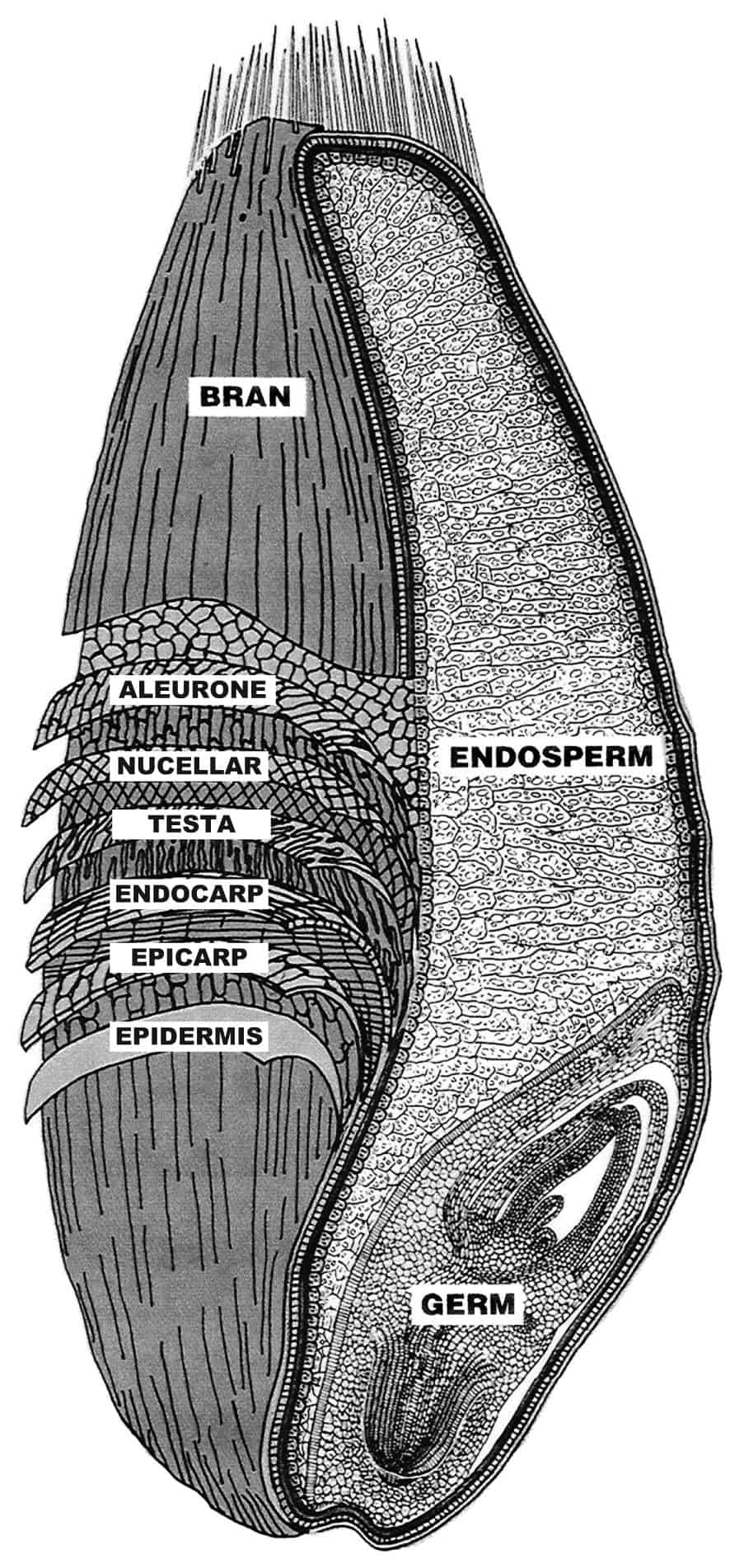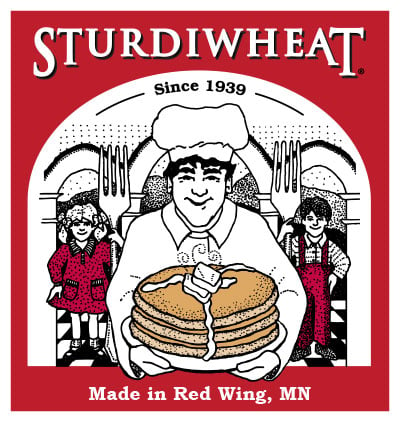Why is it called “whole wheat” flour?
The “whole” in whole wheat flour refers to the fact that the whole kernel of the grain of wheat including its three major parts–the bran, the germ, and the endosperm is used in the milling process and retained in the final flour product. Refined flours strip away one or more of the three main parts of the kernel, see the diagram below. The refined white flour on the shelf at the grocery store has stripped away either bran or the germ or both in the milling process. When the flour is labeled as “enriched” it means that since they stripped away some of those nutritious parts of the kernel, they have added back in some of the essential vitamins and minerals. It turns out we need to consume those enrichments to avoid developing certain nutrition deficiency related diseases that came about when the refinancing process took off in the late 1800’s.

A Kernel of Wheat
The kernel of wheat. . . sometimes called the wheat berry, the kernel is the seed from which the wheat plant grows. Each tiny seed contains three distinct parts that are separated during the milling process to produce flour.
Endosperm
About 83 percent of the kernel weight and the source of white flour. The endosperm contains the greatest share of protein, carbohydrates and iron, as well as the major B-vitamins, such as riboflavin, niacin, and thiamine. It is also a source of soluble fiber.
Bran
About 14.5 % of the kernel weight. Bran is included in whole wheat flour and can also be bought separately. The bran contains a small amount of protein, large quantities of the three major B-vitamins, trace minerals, and dietary fiber–primarily insoluble.
Germ
About 2.5 % of the kernel weight. The germ is the embryo or sprouting section of the seed often separated from flour in milling because the fat content (10 percent) limits flour’s shelf-life. The germ contains minimal quantities of high quality protein and a greater share of B-complex vitamins and trace minerals. Wheat germ can be purchased separately and is part of whole wheat flour.
There are different types of wheat grown around the world that have different baking properties related to their protein content–see table below.
Bread wheat is described as “hard” or “soft” according to its protein content; as “winter” or “spring” according to when its sown; and as “red” or “white” according to color of the kernels. Hard wheat has more protein, including more gluten, and is used for bread, while soft wheat creates “cake flour” with lower protein.1
| Flour Type | % Protein | Recommended Uses | |
| high-gluten | 14-15 | bagels, pizza crusts, blending with other flours | |
| whole-wheat | 14 | hearth breads, blending with other flours | |
| bread | 12 to 13 | traditional breads, bread machine breads, pizza crusts | |
| all-purpose | 9 to 12 | everyday cooking, quick breads, pastries | |
| self-rising | 9 to 11 | biscuits, quick breads, cookies | |
| pastry | 8 to 9 | pie crusts, pastries, cookie, biscuits | |
| cake | 5 to 8 | cakes, especially those with a high ratio of sugar to flour | |
| Table credit: Fine Cooking, Molly Stevens 2021 |
- www.wholegrainscouncil.org
